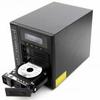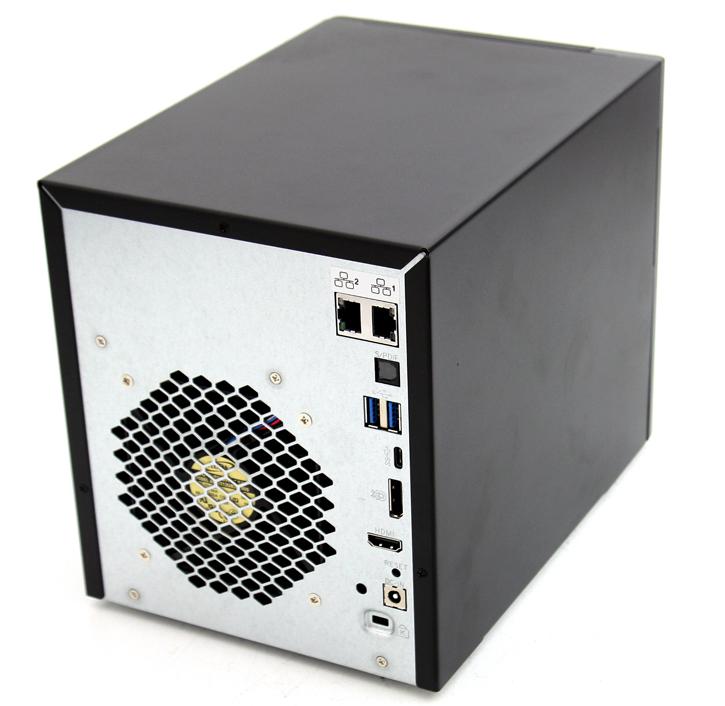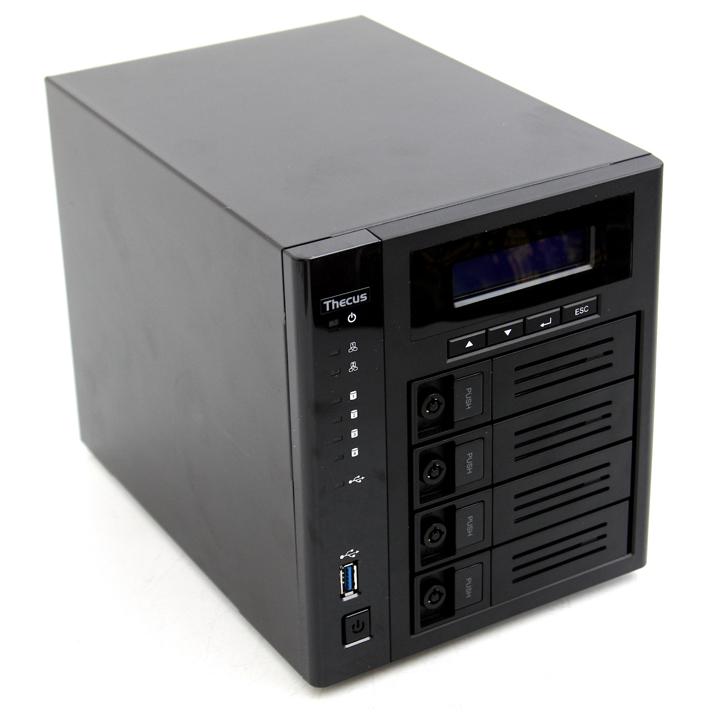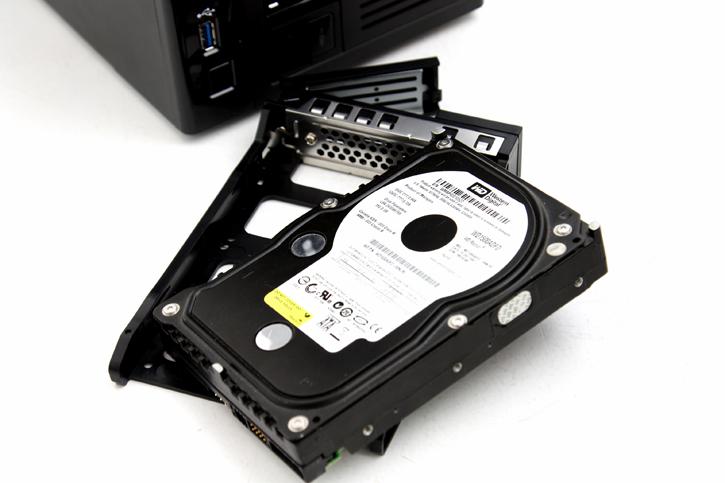Product gallery
Located at the backside we can see the ventilation hole, the unit is quiet, really quiet I should say, fan RPM is flexible depending on temperature and/or configurable fan preference. You can configure power saving and fan options in the software suite but at default you cannot hear this NAS (exclusive of the noise HDDs make obviously). There are connection options including USB 3.0 (two at the back, one in the front). The unit sports two Gigabit Ethernet ports which can be paired or used as fail-over.
- Intel Celeron N3160 1.6GHz burst up to 2.24 GHz Quad-Core
- 4GB DDR3L
- RJ-45x2 : 10/100/1000 BASE-TX Auto MDI/MDI-X
- WOL supported
- USB 3.0 host port x3 (Front x1, Back x2) and Type C x1 back
- HDMI port (back x1) / DP (back x1)
- 4 x SATA for internal
- 90W Internal Power Supply
- Thermal sensor on processor temperature
- Battery-backed up system clock
- Auto power on after shutdown due to power loss
- Adjustable frequency alarm
- Power button
- Temperature: 0°C to 40°C (Operation)
- Humidity: 0 ~ 80 % R.H. (Non-condensing)
- 4 bays Tower Metal Chassis
So connectivity wise you are covered as far as a NAS needs to go. At the back side we also see an HDMI port which can be used to hook into a telly or the DP to your monitor. You can install XBMC/Kodi and use the unit as a media-center PC. At the front side, you can see a USB 3.0 connector on the lower left. There are also LED indicators for the operational status of the NAS.
Based on one Ethernet Gigabit uplink the unit is capable of read speeds of roughly 115 MB/s and write speeds hover in the same region, this of course is dependant on your HDD read/write performance as well. You can double that if you use both Ethernet jacks, however that would require capable switches and NIC clients (PCs) in your LAN infrastructure as well. I do wish 10 Gbps LAN connectors would become a viable affordable alternative in the years to come as currently the Gigabit jacks and infrastructure are limiting NAS performance. Good news on that front is that 5 Gbps should get supported on CAT6e cables real soon. So we hope to see some new developments there.
But yes, the NAS and its HDDs are faster than 1x Gigabit Ethernet. It's your 101 bottleneck really. If you like to take it up a notch in terms of security, a hardware encryption engine is also available, expect that at the cost of loss in performance. The unit features read speeds of roughly 50 MB/s for encrypted data (AES256bit) providing an optimal combination of file security and system performance.
HDDs are easily mounted in the tray with retention bars or, if preferred, with four screws. You slide them into the NAS unit, hot-spares and hot-swap are supported. So if one storage unit in your RAID array cluster fails, you may remove and replace the HDD with the NAS live (this is what we call a hot-swap).
At the bottom, four nice thick rubber feet/rests are located. Combined with the heavy weight of the NAS unit resonating noises are pretty much out of the question. The most noisy thing coming from the NAS unit will be the actual noise of the HDDs themselves. There are proper LED arrays for information as well as the LCD display up top that you can control with the buttons below it.





